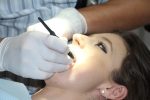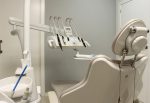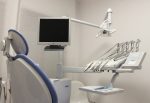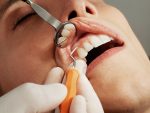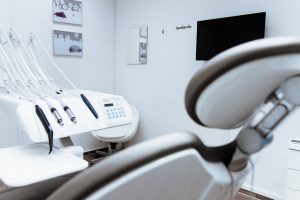
Dental hygienists are known as licensed dental health professionals, meaning that candidates can only start practicing their new career if they qualify for state licensure through their state board of dentistry and pass the examination.
It is worth mentioning that requirements for licensure vary from one jurisdiction to the other, but across the whole country there are three basic requirements that must be met to be allowed to practice dental hygiene in the US:
- Education
- National written examination
- Clinical examination
Page Navigation
Education Requirement for Dental Hygienist Licensure
In the U.S. jurisdictions, dental hygiene programs are accredited by the Commission on Dental Accreditation (CODA).
So as to be able to reach the license, you will need to possess the minimum educational requirement, that is an associate’s degree in dental hygiene.
Some candidates want to pursue bachelor’s degrees, and the American Dental Hygienists Association (ADHA) recognizes both associate’s and bachelor’s-level programs as appropriate education for entry-level jobs.
There are 335 entry-level CODA-accredited dental hygiene programs in the United States which can be attended in different types of institutions, including four-year colleges/universities, community colleges, dental schools, and technical/vocational schools.
Furthermore, there are 55-degree completion programs in dental hygiene that are designed for people who already possess an associate’s degree but wish to advance in their career and complete a bachelor’s degree program in dental hygiene or a related field.
Degree completion programs are typically designed as one of the following:
- Bachelor of Science in Health Sciences
- Bachelor of Science in Allied Health
- Bachelor of Science in Dental Hygiene
You should know that 80 percent of all CODA-accredited programs in dental hygiene require a clinical rotation by the end of the studies.
Coursework that each student will have to take and pass while attending dental hygiene programs is:
- General education courses
- Psychology
- Sociology
- English
- Speech
- Science courses
- Biology
- Physiology
- Microbiology
- Anatomy
- Biochemistry
- Pathology
- Dental science courses
- Dental anatomy
- Head and neck anatomy
- Radiology
- Periodontology
- Dental hygiene courses
- Oral health education
- Community dental health
- Clinical periodontics
- Ethics for the healthcare professional
- Dental health education and methods
- Dental hygiene practicum
It is a fact that a master’s degree is not a requirement for licensure, but there are dental hygienists who want to advance their career in the field of practice administration, human resources, and diagnosis and treatment planning.
National Written Examination Requirement for Dental Hygienist Licensure
The Joint Commission on National Dental Examinations National Board Dental Hygiene Examination (NBDHE) provides an assessment for dental hygienist licensure in the United States.
The NBDHE is required to make sure that a U.S. jurisdiction’s written examination requirement is met and at this moment, all U.S. jurisdictions recognize the NBDHE, including all 50 states, Washington D.C., Puerto Rico, Guam, and the Virgin Islands.
Through its examination, the NBDHE tests a candidate’s ability not only to understand basic information in dental hygiene but also to apply that knowledge in a problem-solving context.
The NBDHE consist of 350 multiple-choice questions that are divided into two components:
Component A: Consists of 200 questions that are related to the following three areas:
- The scientific basis for dental hygiene practice
- Provision of clinical dental hygiene services
- Community health/research principles
Component B: Consists of 150 case-based items that assess situations related to adult and child patients.
Component B is made so that it can be determined whether a dental hygienist is able to perform various tasks, such as interpreting radiographs, using preventive agents, providing supportive treatment service, performing periodontal procedures, and many others.
The NBDHE is administered through Pearson VUE testing centers whose locations are available throughout the United States.
Clinical Examination Requirements for Dental Hygienist Licensure
However, passing the NBDHE is not the only requirement, as all U.S. jurisdictions require dental hygienists to take and pass a clinical (practical) examination so that the candidate can show his/her clinical competency.
These regional clinical examinations consist of skill-specific patient treatment in a clinical setting.
Five regional testing agencies are:
- Council of Interstate Testing Agencies (CITA)
- Central Regional Dental Testing Services (CRDTS)
- North East Regional Board (NERB) of Dental Examiners
- Southern Regional Testing Agency (SRTA)
- Western Regional Examining Board (WREB)
The requirements vary from state to state, so in Kentucky, the completion of any of the above agencies’ exams is acceptable and recognized.
On the other hand, there are states that have more specific requirements, such as New York State where dental hygienists must take and pass a clinical examination through NERB.
All of the above-mentioned examinations include a treatment selection component and a radiographic component.
Still, the CITA, NERB, and WREB also offer a computer component.
It is worth noting that the CRDTS, NERB, and STRA assess a candidate’s clinical skills in the administration of local anesthesia.
California (California Clinical Dental Hygienist Examination) and Delaware (Delaware Practical Board Examination in Dental Hygiene) are two states that have their own, independent, clinical examinations.
Additional Dental Hygienist Licensure Requirements
Besides the required education, national examination, and clinical examination, there are also some additional dental hygenist licensure requirements and applicants will need to:
- Pass a state jurisprudence examination
- Achieve and maintain Basic Life Support (BLS) certification
- Apply for certification in specific areas
- Pass a criminal background check
- Obtain a child abuse clearance
- Provide proof of up-to-date immunizations
- Complete training in infection control and barrier precautions so as to prevent the transmission of HIV and other communicable diseases
